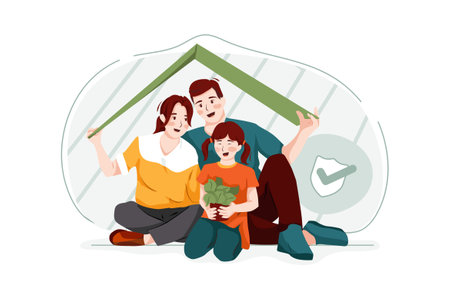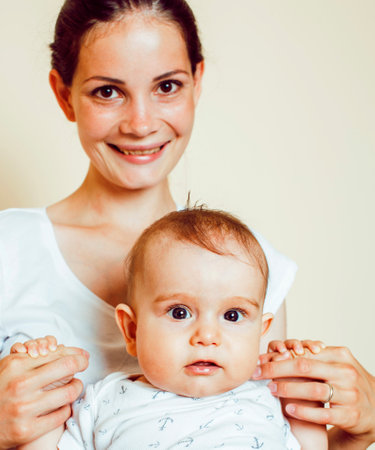1. Understanding Common Causes of Baby Falls
Babies are naturally curious and constantly exploring their surroundings, which makes them prone to falls. Understanding the most common causes of baby falls can help parents take preventive measures to keep their little ones safe.
Unsecured Furniture
Furniture that isn’t properly secured can pose a serious risk to babies. Items such as bookshelves, dressers, and TVs can tip over if a baby pulls on them or tries to climb. To prevent this:
- Anchor heavy furniture to the wall using safety straps.
- Avoid placing toys or tempting objects on top of furniture that could encourage climbing.
- Ensure TV stands are stable and TVs are mounted securely.
Slippery Surfaces
Slippery floors increase the chances of falls, especially when babies start crawling or walking. Here’s how you can reduce the risk:
- Use non-slip rugs or mats in areas where your baby plays.
- Keep floors dry, especially in bathrooms and kitchens.
- Avoid socks with slippery soles—opt for non-slip socks or soft-soled shoes instead.
Lack of Supervision
No matter how careful you are, accidents can happen in just seconds if a baby is left unattended. Some common high-risk situations include:
| Situation | Potential Risk | Prevention Tips |
|---|---|---|
| Beds & Sofas | Babies can roll off unexpectedly. | Never leave a baby unattended on elevated surfaces. |
| Changing Tables | A quick movement can lead to a fall. | Always keep one hand on your baby while changing diapers. |
| Bouncers & High Chairs | If not properly secured, babies can tip over. | Buckle safety straps and place these items on level surfaces. |
The Importance of Supervision
Avoid distractions like phones or multitasking when your baby is on an elevated surface. If you need to step away, always place your baby in a safe spot like a crib or playpen.
2. Practical Tips to Prevent Baby Falls at Home
Keeping your baby safe at home requires proactive steps to minimize fall risks. Babies are naturally curious and love to explore, so its essential to create a secure environment. Here are some practical tips to help prevent baby falls.
Install Baby Gates
Baby gates are a must-have safety feature, especially for homes with stairs. Use sturdy, hardware-mounted gates at the top and bottom of staircases to prevent falls. Avoid pressure-mounted gates at the top of stairs, as they can be pushed over.
Use Non-Slip Mats
Slippery floors can be hazardous, especially in areas like bathrooms and kitchens. Place non-slip mats under rugs and in bathtubs to provide extra traction and reduce the risk of falls.
Ensure Proper Crib Setup
Your babys crib should be set up safely to prevent falls during sleep or playtime. Follow these guidelines:
| Crib Safety Measure | Description |
|---|---|
| Adjust Mattress Height | Lower the mattress as your baby grows to prevent climbing out. |
| Avoid Loose Bedding | Keep pillows, blankets, and stuffed animals out of the crib to reduce suffocation and climbing hazards. |
| Check Rail Spacing | The crib slats should be no more than 2 3/8 inches apart to prevent head entrapment. |
Secure Furniture and Heavy Items
Babies love to pull themselves up on furniture, which can lead to tipping accidents. Anchor heavy furniture like dressers and bookshelves to the wall and keep heavy objects out of reach.
Cushion Hard Surfaces
If your baby is learning to walk or crawl, consider using corner guards on sharp table edges and cushioned play mats in high-traffic areas to soften any potential falls.
Supervise Playtime
No safety measure can replace active supervision. Always keep an eye on your baby when theyre playing, especially on elevated surfaces like couches or changing tables.

3. What to Do Immediately After a Baby Falls
Seeing your baby take a fall can be scary, but staying calm and acting quickly is crucial. Follow these steps to assess your babys condition and provide the right first aid.
Step 1: Stay Calm and Comfort Your Baby
Your baby may cry immediately after falling, which is normal. Pick them up gently if there are no obvious serious injuries and provide comfort. A calm and reassuring presence helps soothe your baby and allows you to assess their condition more effectively.
Step 2: Check for Immediate Signs of Injury
Look for visible injuries or any signs that indicate a serious problem. Use the table below as a quick reference:
| Area to Check | What to Look For |
|---|---|
| Head | Bumps, swelling, bruising, or bleeding |
| Face | Nosebleeds, cuts, or unusual facial expressions |
| Limbs | Swelling, difficulty moving arms or legs |
| Behavior | Excessive crying, drowsiness, vomiting, loss of consciousness |
Step 3: Observe Your Babys Behavior
If your baby seems alert, responsive, and is acting normally after a short period of crying, they are likely okay. However, watch closely for any delayed symptoms such as irritability, excessive sleepiness, or poor coordination.
Step 4: Apply First Aid for Minor Injuries
Bumps and Bruises
If theres swelling on the head or body, apply a cold compress wrapped in a cloth for 10-15 minutes to reduce swelling.
Small Cuts or Scrapes
Clean the wound with warm water and mild soap. Apply gentle pressure with a clean cloth if there is minor bleeding.
Step 5: Seek Medical Help If Needed
If your baby shows any of the following signs after a fall, seek medical attention immediately:
- Loss of consciousness or unresponsiveness
- Persistent vomiting or seizures
- A large bump or deep cut on the head
- Difficulties breathing or staying awake
- An unusual cry that doesn’t stop after comforting
- Any signs of broken bones (swelling, deformity, inability to move limbs)
Step 6: Continue Monitoring for the Next 24 Hours
Even if your baby seems fine initially, keep an eye out for any unusual behavior over the next day. If anything seems off, contact your pediatrician for advice.
By following these steps, you can confidently handle a minor fall while ensuring your babys safety and well-being.
4. When to Seek Medical Attention
As a parent, its natural to worry when your baby takes a fall. While many minor falls result in little more than a few tears and a quick recovery, some situations require urgent medical attention. Knowing the warning signs can help you act quickly and ensure your baby gets the care they need.
Signs That Require Immediate Medical Care
If your baby exhibits any of the following symptoms after a fall, seek medical attention right away:
| Warning Sign | Why It’s Concerning |
|---|---|
| Excessive Crying | If your baby cries uncontrollably and cannot be soothed, this may indicate pain or injury. |
| Vomiting | Repeated vomiting after a fall could be a sign of a concussion or head trauma. |
| Drowsiness or Difficulty Staying Awake | If your baby is unusually sleepy or difficult to wake, it could signal a serious head injury. |
| Loss of Consciousness | If your baby loses consciousness, even briefly, seek emergency medical help immediately. |
| Bruising or Swelling on the Head | A large bump or swelling on the head may indicate internal injury. |
| Poor Coordination or Weakness | If your baby has trouble moving their limbs normally, this could suggest nerve or brain injury. |
What to Do If You Notice These Symptoms
- Call 911 or go to the emergency room: If your baby is unconscious, having seizures, struggling to breathe, or showing any severe symptoms.
- Avoid shaking or jostling your baby: If you suspect a head or neck injury, keep them as still as possible while waiting for medical help.
- Monitor closely: Even if symptoms seem mild at first, watch for any changes in behavior over the next 24 hours.
5. Long-Term Safety Practices for Growing Babies
As your baby becomes more mobile, its important to adapt your home and daily routines to keep them safe. Crawling, pulling up, and eventually walking introduce new risks, so transitioning to toddler-proofing strategies early can prevent accidents.
Securing Your Home for a Moving Baby
Once your baby starts moving around, every room in your home should be evaluated for potential hazards. Here are some key areas to focus on:
| Safety Measure | Description |
|---|---|
| Install Baby Gates | Use sturdy gates at the top and bottom of stairs and block off hazardous areas. |
| Cushion Sharp Edges | Add corner guards to furniture like coffee tables and TV stands. |
| Secure Heavy Furniture | Anchor bookshelves, dressers, and TVs to the wall to prevent tipping. |
| Cover Electrical Outlets | Use outlet covers or safety plugs to prevent little fingers from exploring dangerous openings. |
| Keeps Floors Clutter-Free | Avoid tripping hazards by keeping toys and small objects off walkways. |
Toddler-Proofing as Your Baby Grows
Your babys curiosity will only grow as they become a toddler. Here are additional steps to enhance safety:
- Latches on Cabinets and Drawers: Secure cabinets with cleaning supplies, sharp objects, or medications.
- No-Climb Zones: Arrange furniture so your child cant use it to climb onto unsafe surfaces.
- Bathroom Safety: Keep toilet lids closed and use anti-slip mats in the tub.
- Shoe-Free Policy: Encourage removing shoes indoors to minimize dirt and choking hazards from small debris.
- Create Safe Play Areas: Designate a soft play zone with padded flooring for falls.
The Importance of Supervision and Routine Checks
No amount of baby-proofing replaces active supervision. As your child develops new skills, routinely check for new potential dangers in your home. Regularly inspect gates, locks, and furniture anchors to ensure they remain secure over time.
A Safe Environment Supports Healthy Growth
Your babys transition from crawling to walking is an exciting milestone! By adapting your home with these long-term safety practices, you provide a secure space where they can explore confidently while reducing the risk of falls and injuries.


